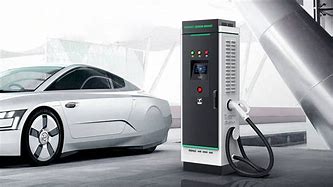48V 100A Forklift Charger Efficiency and Safety
Forklifts play a crucial role in material handling across various industries, and ensuring their optimal performance is essential for smooth operations. One key component that directly impacts a forklift's efficiency is its charging system. In this blog, we delve into the specifics of the 48V 100A forklift charger, providing a comprehensive manual for users, technicians, and maintenance personnel.
I. Understanding the Basics:
Voltage and Amperage:
The 48V rating signifies the charger's output voltage, which is tailored to the forklift's electrical system.
The 100A indicates the charger's current output capacity, determining the rate at which the forklift's battery is charged.
Compatibility:
Before using the charger, ensure that it is compatible with your forklift's battery specifications.
Check the manufacturer's guidelines to avoid potential damage to the forklift's electrical system.
II. Safety Precautions:
Proper Installation:
Follow the manufacturer's installation instructions meticulously.
Ensure a stable and secure electrical connection to prevent accidents and damage.

Ventilation:
Place the charger in a well-ventilated area to dissipate heat generated during the charging process.
Adequate ventilation prevents overheating and extends the charger's lifespan.
Temperature Considerations:
Operate the charger within the recommended temperature range for optimal efficiency.
Extreme temperatures can affect the charging process and the longevity of the charger.
Regular Inspections:
Conduct routine inspections for damaged cables, loose connections, or any signs of wear.
Replace faulty components immediately to prevent safety hazards.
III. Operating the Charger:
Charging Procedures:
Connect the charger to the forklift battery following the prescribed sequence.
Ensure the forklift is turned off during the charging process.

Monitoring:
Keep a close eye on the charging progress and interrupt the process if any abnormalities occur.
Utilize the charger's monitoring features to track voltage, current, and charging time.
Maintenance Mode:
Some chargers come equipped with maintenance modes to ensure battery health.
Familiarize yourself with these modes and use them as recommended by the manufacturer.
IV. Troubleshooting and Maintenance:
Diagnostic Features:
Understand the charger's diagnostic capabilities to identify potential issues.
Refer to the troubleshooting section of the manual for guidance on resolving common problems.
Regular Maintenance:
Develop a maintenance schedule, including cleaning, inspection, and component testing.
Adhering to a routine maintenance plan enhances the charger's reliability and longevity.
V. Conclusion:
A 48V 100A forklift charger is a critical component in maintaining the efficiency and longevity of your forklift's battery. By understanding its specifications, following safety protocols, and implementing proper operating and maintenance procedures, you can ensure a smooth and reliable charging process. Always refer to the manufacturer's manual for specific guidelines tailored to your charger model, and prioritize safety to enhance the overall performance of your forklift fleet.
评论
发表评论